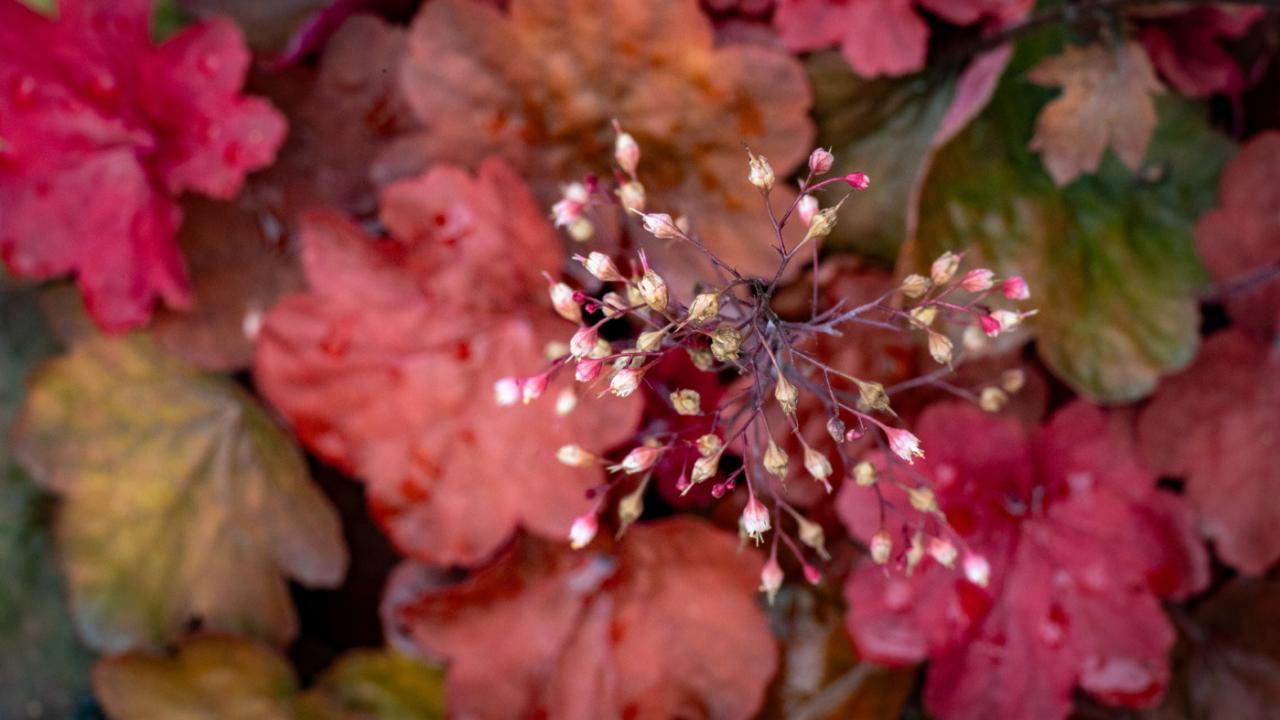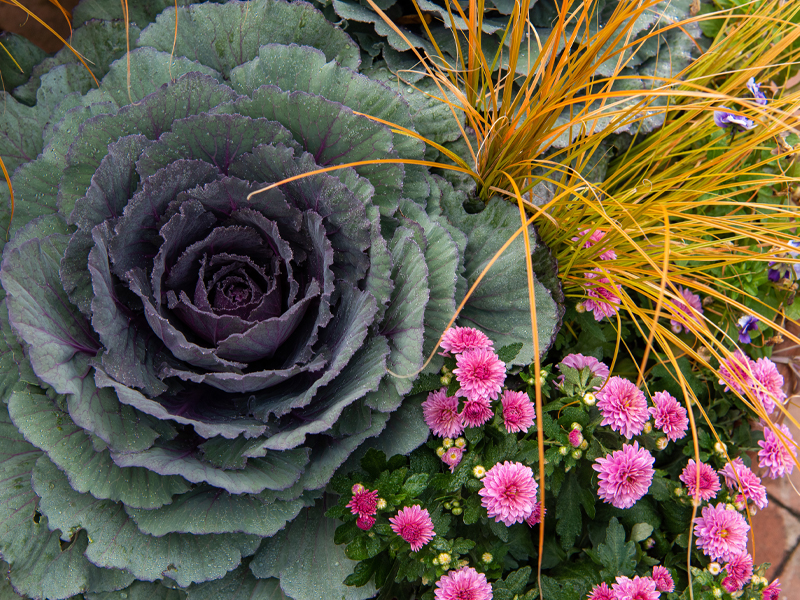

Beyond the mum
Lyrical fall planting ideas and more
As summer blooms fade, you’ll see mums everywhere—the automatic go-to fall favorites—but what else can heighten your containers and garden with color, texture, and surprise?
According to Tim Pollak, manager of plant production at the Chicago Botanic Garden, autumn offers ample opportunities to “go beyond the mum” and bring unique visual allure to home garden design. “You can make eye-catching additions that will endure late into the fall and even into early winter,” he says.
Pollak suggests a few plants that are readily available at most nurseries and even grocery stores—celosia, ornamental peppers, and dahlias, to name a few.

Celosia
Commonly known as cockscomb because of its resemblance to a rooster’s comb, celosia comes in brightly colored red, pink, orange, or yellow blossoms that boast a velvety, wavy texture. What’s more, their striking color lasts beyond the growing season, making this an excellent choice for drying—then you’ll be able to add some warmth to interior displays over the winter.

Ornamental peppers
“Ornamental peppers are a favorite of mine, too,” says Pollak. “They’re a different kind of plant to see in a pot on a porch, and the fruit has fiery red, yellow, and orange color. When it gets down to the low 30s Fahrenheit, the plant will drop its leaves, but the vividly colored fruit remains and keeps the display visually interesting late into the season.”

Dahlias
Simone Gore is an assistant grower for outdoor floriculture in the Garden’s Plant Production department. She and Pollak both highly recommend dahlias. “I really love dahlias in pots or containers, and they flower late into the fall season. They come in great autumnal hues—rust, burnt orange, deep purple, and gold, for example—that really go well with the season.”

Options, options, options
Gore also weighed in on some of her other favorite fall florals. “Fall is a great time to think about plants like asters, heucheras, rudbeckias, anemones, dianthus, and many perennial grasses and sedges, both native and hardy types. Any of these would look great in pots on porches in the fall. There are also many types of chrysanthemums that do well in our climate zone and would be nice in a fall display.”
Designing your fall display
As you go about making selections for your fall displays, following some basic principles of floral design can really pay off. One such principle recommends creating a pleasing balance of “thrillers, fillers, and spillers.”
Thrillers, fillers, and spillers
Pollak explains this catchy phrase. “Thrillers are the showy ones that really stand out. Fillers do just that—they fill in to create volume, texture, and height—a sort of background canvas for the more colorful splashes in your display. And, of course, spillers are what soften the edges. They hang over and cascade downward, creating movement and a nice lyrical flourish.”
Balance is key
When planning your display, says Pollak, “You're not always dwelling on a certain flower or color, necessarily. You want to think about how it all blends together as a whole, both, architecturally and textually. At the Garden we use this concept as a kind of guide, even in some of our largest displays. It’s a good tool to help you create a balanced aesthetic that can really draw people in.”
Grasses and sedges
Keeping these design tips in mind, grasses or sedges can really help create high visual value and balance. They create height and serve as excellent “fillers” to make those bright blossoms really light up. Little bluestem or purple love grass, for example, offer a great counterpoint to those more vivid colors but also add vertical movement and height.
Keep your plants cozy through winter
According to Gore, an added plus to choosing your fall florals well is that many of these plants can be wintered in pots in a garage or basement that doesn’t go below freezing. As for plants in garden beds, they can be covered over with leaf mulch to weather the cold.
Gore explains that “leaf mulching helps the soil stay frozen so that the plant’s roots are not exposed to the stresses of temperature fluctuations. If winter temperatures are not too extreme, your fall plants may well survive through the winter and bring more joy the coming year.”





